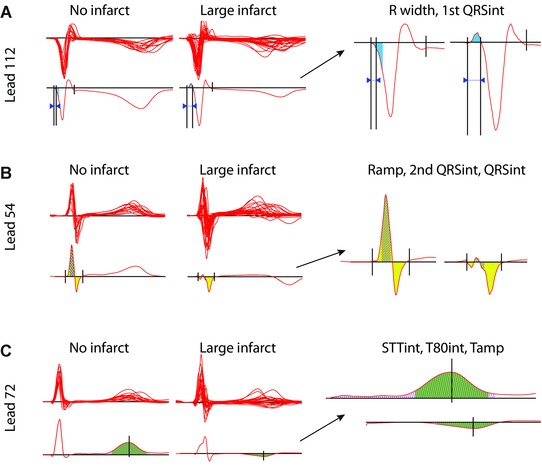Figure 2.

(A–C) QRSSTT complexes in the chronic phase in patients with no infarct or with large infarct. In the left column, above, are piled complexes of all patients, and below, single representative examples within each group (no infarct vs large infarct). The optimal leads differentiating the groups are displayed. The single QRSSTT examples highlight the best performing BSPM variables, the highlighted regions are further enlarged in the column to the right: (A) Lead 112, 1st QRSint (blue) is negative in a patient without infarct, and positive in a patient with a large infarct; R width (width of the “reciprocal Q wave”) between arrows is wider in the patient with a large infarct. (B) Lead 54, 2nd QRSint (hatched) and QRSint (yellow) are positive and greater, and Ramp is higher in a patient without infarct compared to a patient with a large infarct. (C) Lead 72, T80int (green) and STTint (hatched) are positive and greater, and Tamp positive in a patient without infarct compared to a patient with a large infarct. Lead numbers refer to the BSPM layout in Figure 1. ECG variables are defined in Table 2.
